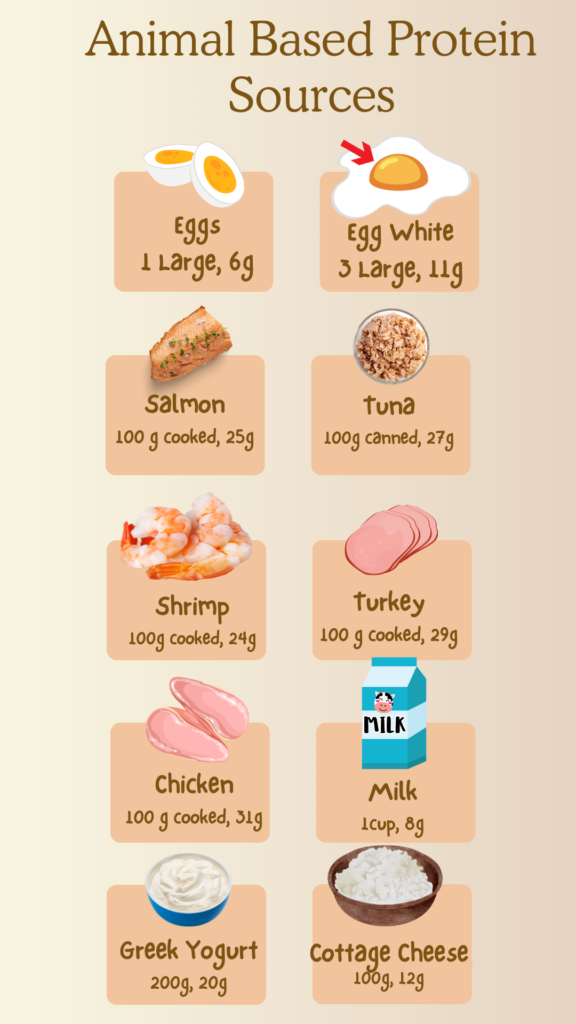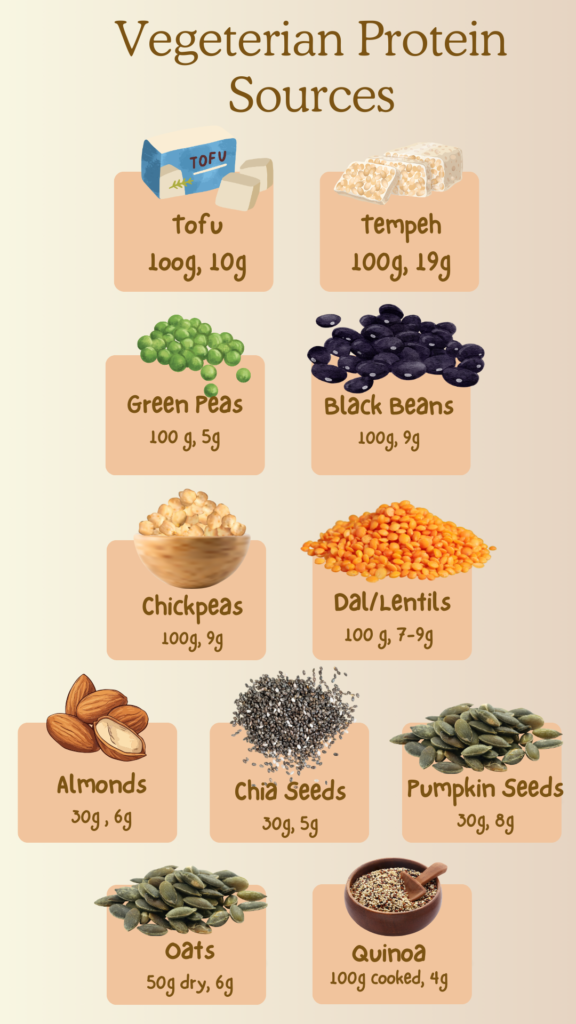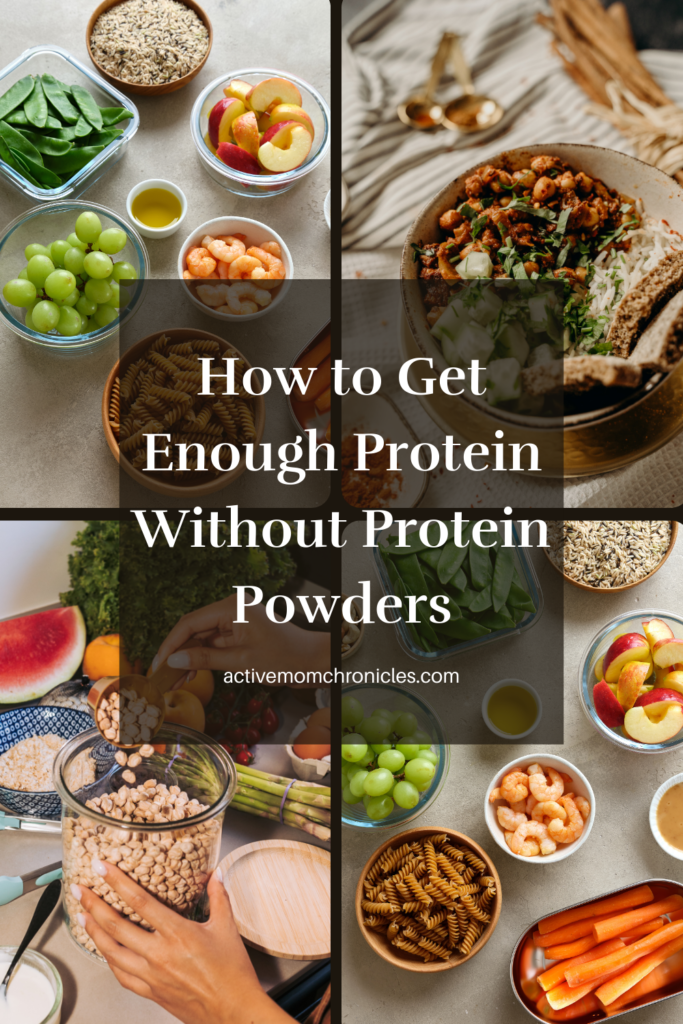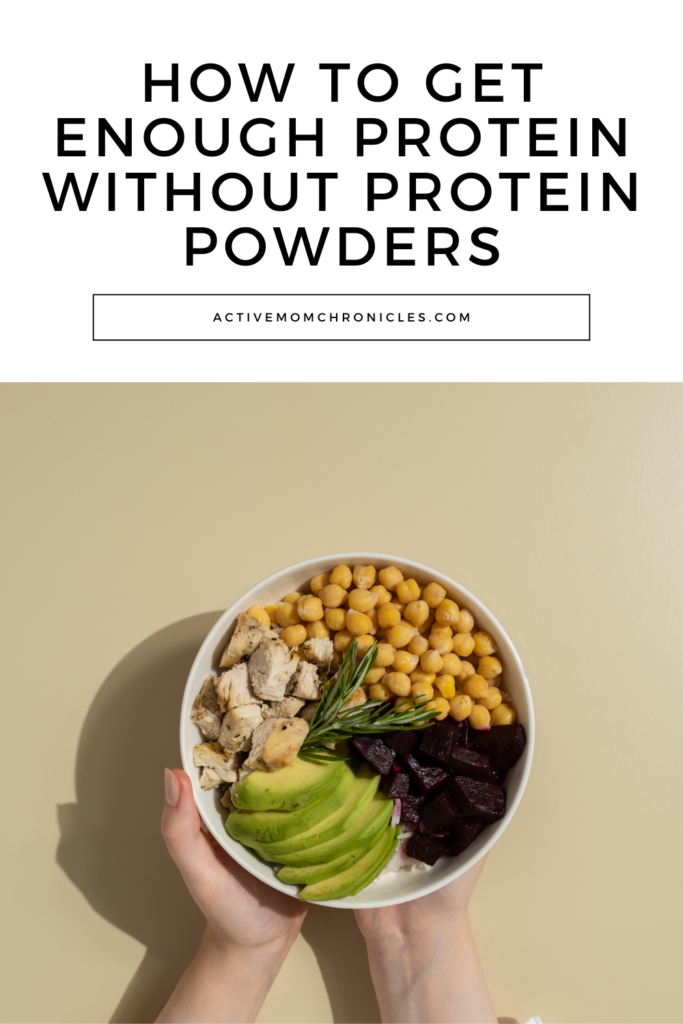Protein is essential for muscle growth, weight management, and overall health, but many people believe that protein powders are the only way to meet their daily protein needs. The truth is, you can get enough protein from whole foodswithout relying on supplements. Whether you eat animal-based or plant-based foods, there are plenty of natural protein sources to incorporate into your diet.
How Much Protein Do You Need?
The daily recommended intake of protein varies based on individual goals:
- General health: 0.8g per kg of body weight
- Active individuals: 1.2–2.0g per kg of body weight
- Muscle building or fat loss: 1.6–2.4g per kg of body weight
Now, let’s explore the best whole food protein sources for both omnivores and vegetarians.
Animal-Based Protein Sources (Per Serving Size)
If you consume animal products, these are some of the best natural sources of protein:
1. Eggs & Egg Whites
- Whole Egg (1 large, 50g): 6g protein
- Egg Whites (3 large, 100g): 11g protein
2. Chicken Breast
- Chicken Breast (100g, cooked): 31g protein
3. Turkey
- Turkey Breast (100g, cooked): 29g protein
4. Fish & Seafood
- Salmon (100g, cooked): 25g protein
- Tuna (100g, canned): 27g protein
- Shrimp (100g, cooked): 24g protein
5. Dairy Products
- Greek Yogurt (200g, plain, nonfat): 20g protein
- Cottage Cheese (100g, low-fat): 12g protein
- Milk (250ml, low-fat): 8g protein

Vegetarian Protein Sources (Per Serving Size)
For those who prefer a plant-based diet, here are high-protein vegetarian foods:
1. Tofu & Tempeh
- Firm Tofu (100g): 10g protein
- Tempeh (100g): 19g protein
2. Peas & Beans
- Green Peas (100g, cooked): 5g protein
- Black Beans (100g, cooked): 9g protein
3. Chickpeas
- Chickpeas (100g, cooked): 9g protein
4. Dals & Pulses
- Moong Dal (100g, cooked): 8g protein
- Toor Dal (100g, cooked): 7g protein
- Masoor Dal (100g, cooked): 9g protein
5. Nuts & Seeds
Note: Nuts and seeds are usually high in fat so the calories can add up. Be cautious when adding nuts and also count them as a fat source.
- Almonds (30g): 6g protein
- Chia Seeds (30g): 5g protein
- Pumpkin Seeds (30g): 8g protein
6. Whole Grains
Whole grains are primarily carb sources than protein sources but I’ve mentioned them here to call out that protein adds up when you chose your plate wisely even with a vegetarian diet.
- Quinoa (100g, cooked): 4g protein
- Oats (50g, dry): 6g protein

When you don’t eat meat it may seem difficult to get protein without protein powder however the more diverse your plate is with whole sources the better it is for you and protein adds up. See sample meals below.
Sample Meal Plans for a Day
1. Mixed Animal & Plant-Based Meal Plan
- Breakfast: Scrambled eggs (2 whole eggs + 2 egg whites) with whole wheat toast and avocado. (30g protein)
- Lunch: Grilled chicken (100g) with quinoa (100g) and steamed broccoli. (40g protein)
- Snack: Greek yogurt (200g) with chia seeds and almonds. (25g protein)
- Dinner: Salmon (100g) with roasted sweet potatoes and a side of sautéed spinach. (35g protein)
Total Protein: ~130g
2. Vegetarian Meal Plan
- Breakfast: Moong dal chilla with Greek yogurt and flaxseeds. (28g protein)
- Lunch: Quinoa and chickpea salad with cucumber, tomatoes, and lemon dressing. (32g protein)
- Snack: Roasted chana (50g) with a handful of almonds. (22g protein)
- Dinner: Paneer tikka (100g) with dal tadka and brown rice. (38g protein)
Total Protein: ~120g
Tips to Increase Protein Intake Naturally
- Include protein in every meal – Balance your plate with eggs, lentils, or dairy.
- Combine plant proteins – Mix beans and rice or dal and roti for complete proteins.
- Snack on high-protein foods – Greek yogurt, roasted chickpeas, or nuts.
- Use tofu or tempeh in meals – Great for curries, stir-fries, and salads.
- Add seeds & nuts to meals – Sprinkle chia, flax, or hemp seeds in smoothies or oatmeal.
Conclusion
Getting enough protein without supplements is completely possible with a well-balanced diet. Whether you prefer animal-based proteins like eggs and chicken or vegetarian options like tofu and lentils, there are plenty of natural food sources to help you meet your protein needs.
What’s Your Favorite High-Protein Whole Food?
Let us know in the comments below!







Leave a Reply